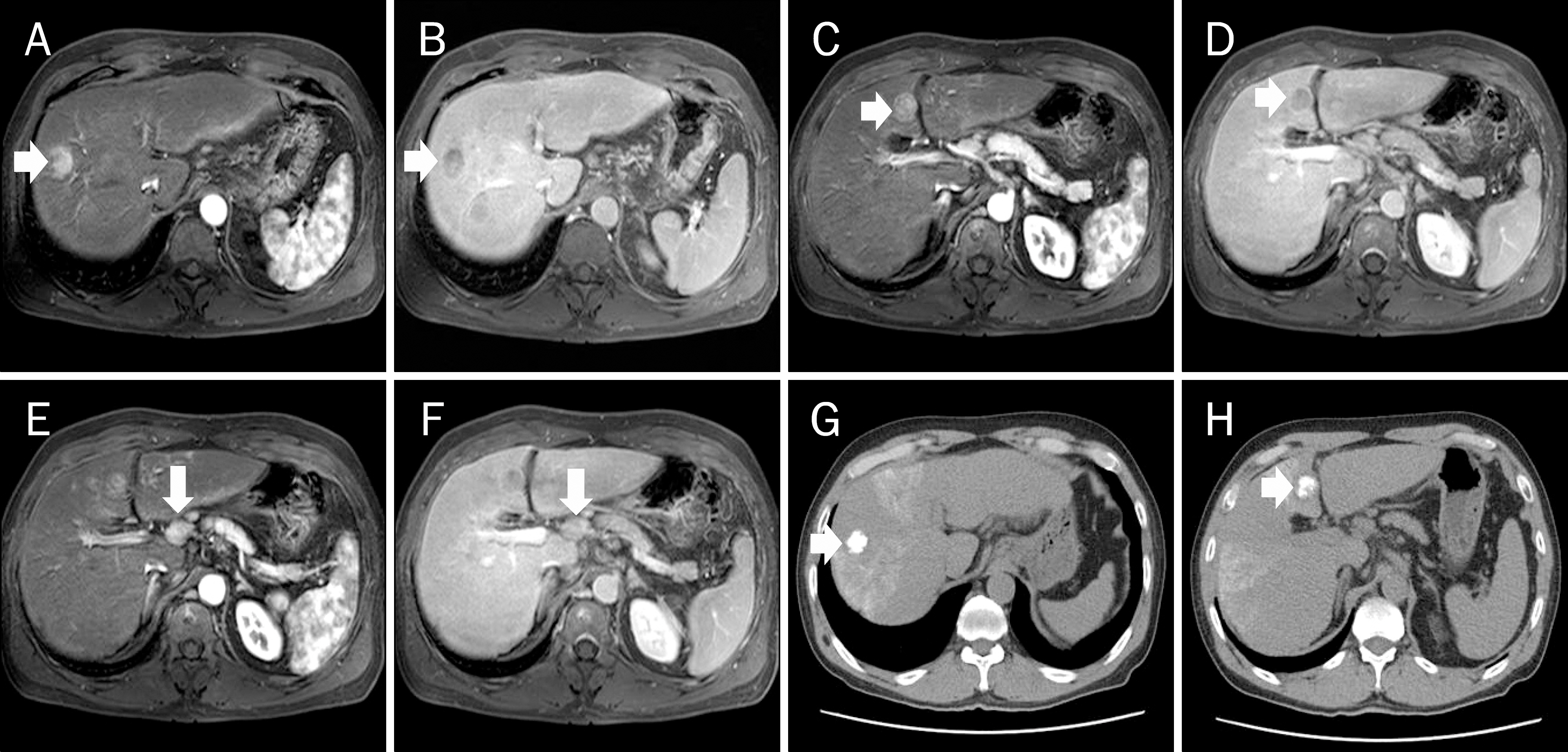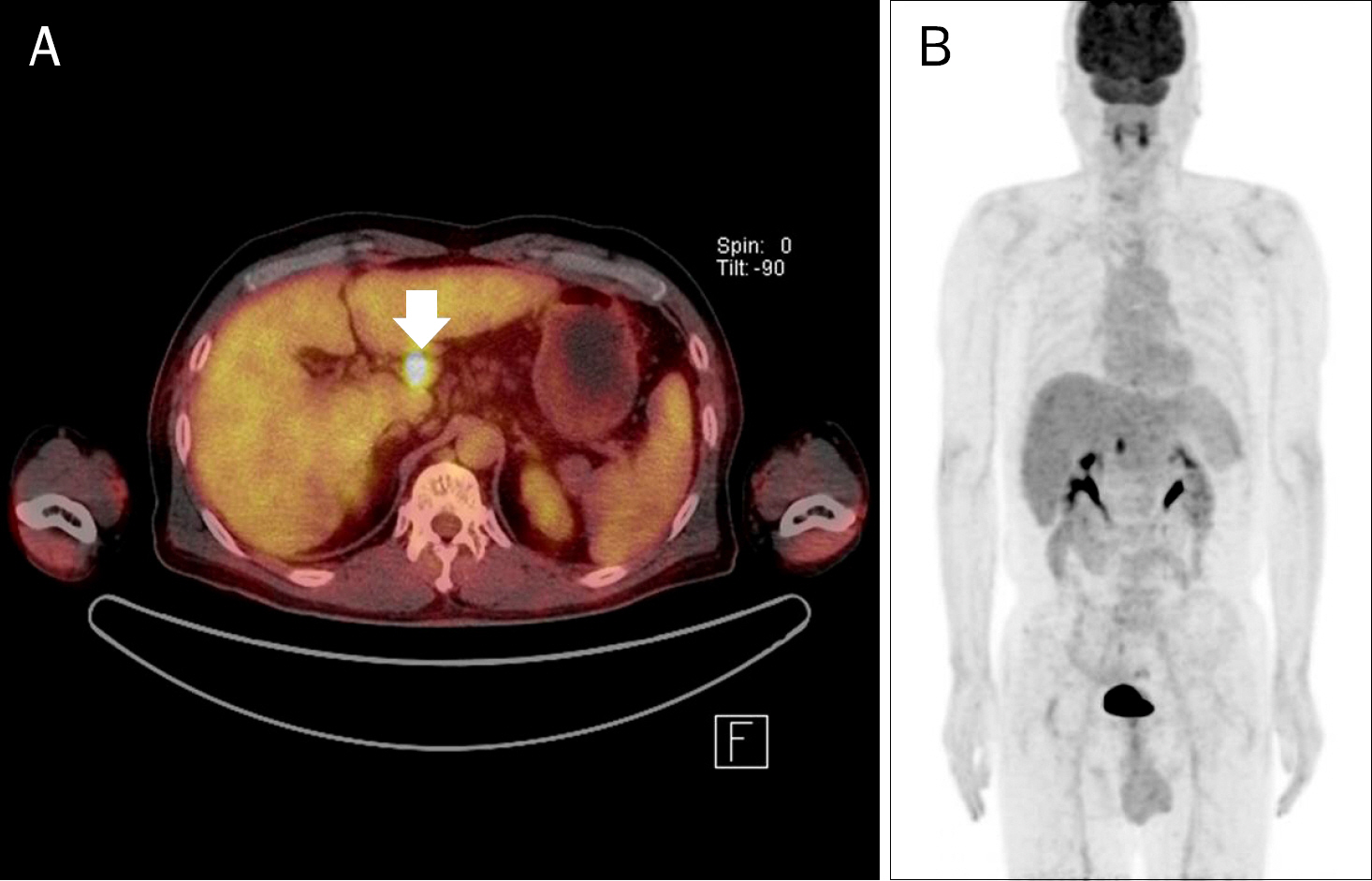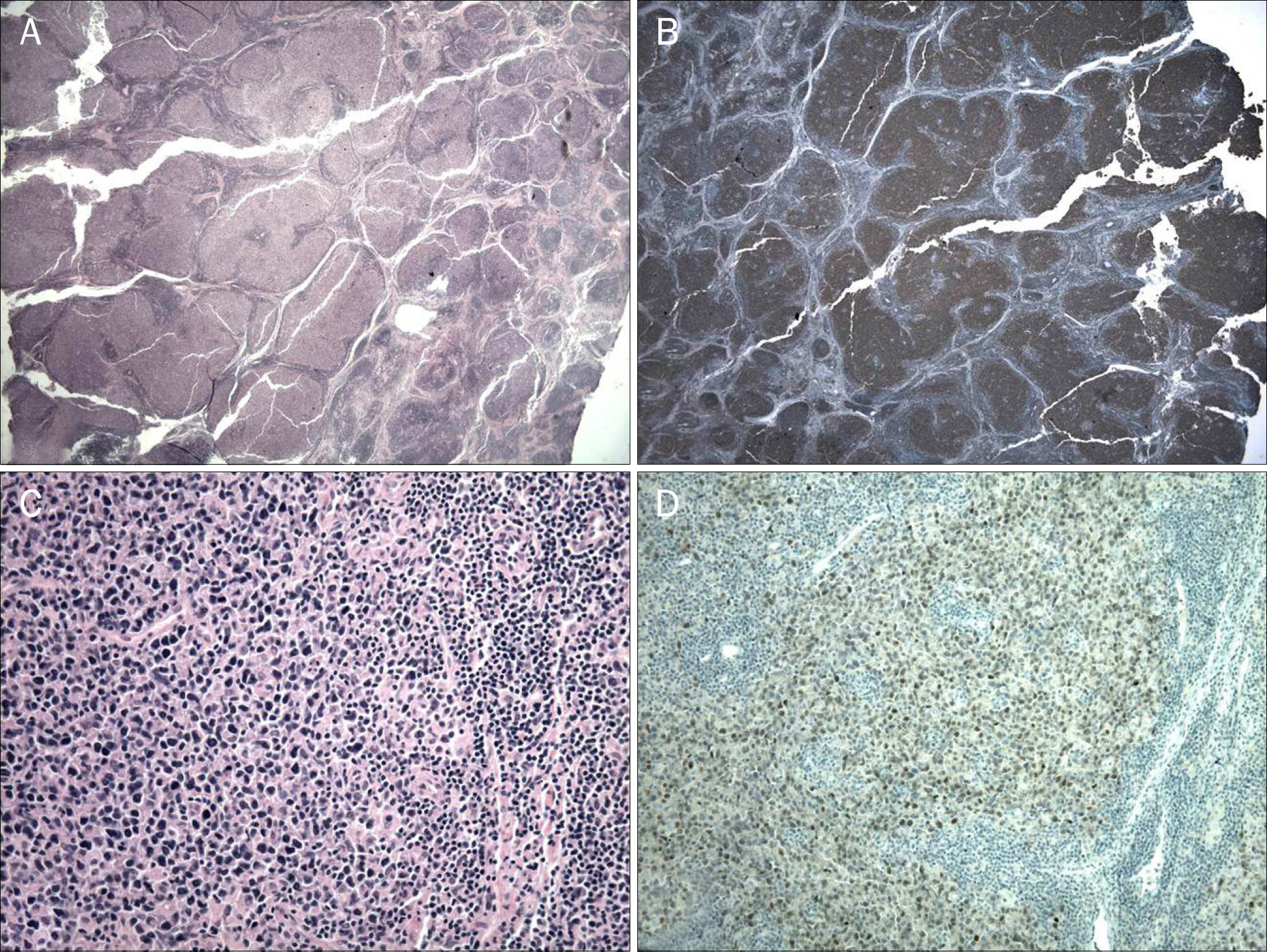Korean J Gastroenterol.
2014 Sep;64(3):168-172. 10.4166/kjg.2014.64.3.168.
Synchronous Hepatocellular Carcinoma and B-Cell Non-Hodgkin's Lymphoma in Chronic Hepatitis C Patient
- Affiliations
-
- 1Department of Internal Medicine, Inje University Haeundae Paik Hospital, Inje University College of Medicine, Busan, Korea. nyheo@hanmail.net
- 2Department of Surgery, Inje University Haeundae Paik Hospital, Inje University College of Medicine, Busan, Korea.
- 3Department of Pathology, Inje University Haeundae Paik Hospital, Inje University College of Medicine, Busan, Korea.
- 4Department of Radiology, Inje University Haeundae Paik Hospital, Inje University College of Medicine, Busan, Korea.
- 5Department of Nuclear Medicine, Inje University Haeundae Paik Hospital, Inje University College of Medicine, Busan, Korea.
- KMID: 2160660
- DOI: http://doi.org/10.4166/kjg.2014.64.3.168
Abstract
- Hepatitis C virus (HCV) is one of the main viral causes of hepatocellular carcinoma (HCC) and is associated with lymphoproliferative disorder such as non-Hodgkin's lymphoma (NHL). However, there are only few case reports on concomitantly induced NHL and HCC by HCV. Herein, we report a case of synchronous NHL and HCC in a patient with chronic hepatitis C which was unexpectedly diagnosed during liver transplantation surgery. This case suggests that although intrahepatic lymph node enlargements are often considered as reactive or metastatic lymphadenopathy in chronic hepatitis C patients with HCC, NHL should also be considered as a differential diagnosis.
MeSH Terms
-
Antineoplastic Agents/therapeutic use
Carcinoma, Hepatocellular/complications/*diagnosis/radiotherapy
Drug Therapy, Combination
Embolization, Therapeutic
Fluorodeoxyglucose F18
Gadolinium DTPA
Genotype
Hepatitis B virus/genetics
Hepatitis C, Chronic/complications/*diagnosis/*virology
Humans
Liver Neoplasms/complications/*diagnosis/radiotherapy
Lymph Nodes/pathology
Lymphoma, Non-Hodgkin/complications/*diagnosis/drug therapy
Magnetic Resonance Imaging
Male
Middle Aged
Positron-Emission Tomography
Tomography, X-Ray Computed
Antineoplastic Agents
Fluorodeoxyglucose F18
Gadolinium DTPA
Figure
Reference
-
References
1. Marcucci F, Mele A. Hepatitis viruses and non-Hodgkin lymphoma: epidemiology, mechanisms of tumorigenesis, and therapeutic opportunities. Blood. 2011; 117:1792–1798.
Article2. Ono T, Komatsu M, Masamune O. Primary lymphoma of the spleen with hepatocellular carcinoma. Intern Med. 1995; 34:261–264.
Article3. Suriawinata A, Ye MQ, Emre S, Strauchen J, Thung SN. Hepatocellular carcinoma and non-Hodgkin lymphoma in a patient with chronic hepatitis C and cirrhosis. Arch Pathol Lab Med. 2000; 124:1532–1534.
Article4. Shapira MY, Muszkat M, Braunstein I, Gotsman I. Co-occurrence of hepatocellular carcinoma and lymphoma in patients with hepatitis C virus cirrhosis. J Clin Gastroenterol. 2001; 32:368–369.
Article5. Himoto T, Miyauchi Y, Nomura K, et al. Coexistence of splenic non-Hodgkin's lymphoma with hepatocellular carcinoma in a patient with chronic hepatitis C. Dig Dis Sci. 2006; 51:70–76.
Article6. Ohtsubo K, Oku E, Imamura R, et al. Simultaneous hepatic relapse of non-Hodgkin's lymphoma and hepatocellular carcinoma in a patient with hepatitis C virus-related cirrhosis. Acta Haematol. 2006; 116:266–271.
Article7. Lin A, Kadam JS, Bodenheimer HC, Leonard J, Joyce MA, Lake-Bakaar G. Concomitant diffuse large B-cell lymphoma and hepatocellular carcinoma in chronic hepatitis C virus liver disease: a study of two cases. J Med Virol. 2008; 80:1350–1353.
Article8. Utsunomiya T, Okamoto M, Tsujita E, et al. Hepatocellular carcinoma infiltrated with non-Hodgkin's lymphoma: report of a case. Surg Today. 2009; 39:1010–1012.
Article9. Becker DJ, Sevilla DW, O'Connor O. Concurrent and apposed hepatocellular carcinoma and small lymphocytic lymphoma/chronic lymphocytic leukemia in a patient with hepatitis C virus. Acta Haematol. 2010; 123:77–80.
Article10. Ishikawa T, Shibuya K, Yasui K, Mitamura K, Ueda S. Expression of hepatitis C virus core protein associated with malignant lymphoma in transgenic mice. Comp Immunol Microbiol Infect Dis. 2003; 26:115–124.
Article
- Full Text Links
- Actions
-
Cited
- CITED
-
- Close
- Share
- Similar articles
-
- Relationships among Hepatitis C Virus, Hepatocellular Carcinoma, and Diffuse Large B Cell Lymphoma: A Case Report
- Case of Synchronous Primary Gastric Diffuse Large B-Cell Lymphoma and Hepatocellular Carcinoma
- A case of synchronous triple primary cancer of non-Hodgkin's lymphoma associated with hepatocellular carcinoma and early gastric cancer
- A Case of Non-Hodgkin's Lymphoma Associated with Hepatocellular Carcinoma
- A Case of Synchronous Gastric Non - Hodgkin's Lymphoma and Renal Cell Carcinoma




